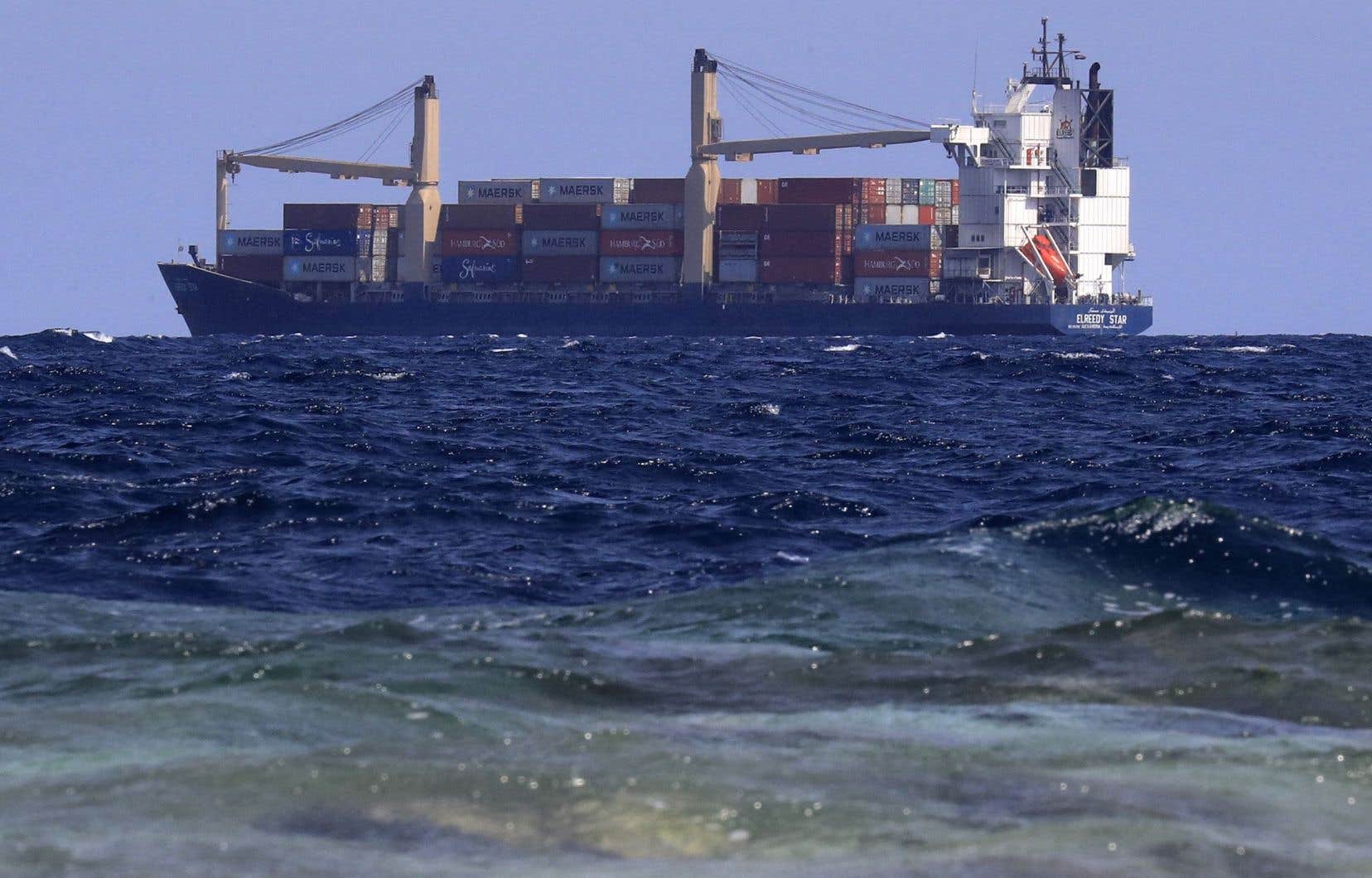Canadian shippers are starting to feel the pressure from attacks on cargo ships in the Red Sea, as container rates rise and ships are slow to arrive on the East Coast.
Data from the Port of Halifax shows that 57 of the 87 ships — almost two-thirds — scheduled to arrive at the port over the next four weeks are now expected at least a day behind schedule, some a few weeks behind schedule .
According to research firm Drewry, the average price of shipping containers has doubled since mid-December, when Houthi militants in Yemen stepped up attacks on commercial boats to protest Israel’s military campaign in the Gaza Strip.
The United States carried out airstrikes against Houthi rebels on Friday in an intervention that included planning support from the Canadian Armed Forces.
Houthi rebels fired a missile that hit a U.S. ship on Monday, less than a day after the same group launched an anti-ship cruise missile toward a U.S. destroyer in the Red Sea.
The scale of the conflict has prompted major container shippers to avoid the route through the Suez Canal, opting instead for a route around Africa’s Cape of Good Hope, which can add one to two weeks to the journey and increase costs related to fuel, crew and insurance.
“The global shipping industry is being impacted by the situation in the Red Sea, and we are starting to see delays as shipping companies use alternative routes around Africa,” said Paul MacIsaac , senior vice-president of the Port of Halifax, in a press release.
Shipping Federation of Canada CEO Chris Hall says the delays have left importers scrambling, with struggling inventory still on its way to Canadian shores and shelves.
“The number of ships that have been hijacked is staggering. This change adds time and cost to the final product, he said. Someone has to do it. »
The Port of Montreal schedule largely unchanged
But experts have warned against overestimating the impact, as schedules at the port of Montreal and the West Coast remain largely unchanged so far.
“Since the Red Sea/Suez Canal is a trade route that largely serves Europe and the east coast of North America, trans-Pacific transit lengths are not expected to be affected by the current situation,” said Alex Munro, spokesperson for the Vancouver-Fraser Port Authority.
Ripple effects, including price impacts, could still occur.
Rates on shipments from East Asia to the U.S. West Coast jumped 56% month-over-month on Thursday, according to freight analytics firm Xeneta.
But excess capacity in the sector means carriers can adapt to longer shipping times and rates will likely stabilize well below pandemic highs, according to the Global Shippers Forum, which represents cargo owners.
“There is no chronic shortage of transportation capacity as was the case during the COVID pandemic, and substantial new capacity is expected to be delivered throughout the first half of 2024,” the organization said in a statement. update to members Friday.
The longer routes mean ports will have to make a “one-off” change to timetables over the coming weeks, but service patterns should return to predictability thereafter, it has been argued.
Shippers facing contract renewals amid rising costs can include provisions allowing them to pay less once spot rates fall again, the group noted.
Furthermore, demand for on-board cargo space remains stable or slightly declining, according to experts.
“There was high inflation, there was the COVID hangover and people were spending all the CERB money on big screen TVs; they didn’t need another one,” said John Corey, who heads the Canadian Freight Management Association. Container traffic through the West Coast fell about 9% last year, he said.
A drought in Central America
However, a drought in Central America has further amplified the impact of the Red Sea no-go zone.
The drought has emptied the Panama Canal of water that is used to move ships up and down at a dozen locks, prompting authorities to reduce the number of boats they let pass through the waterway.
The decline in berths has increased tolls and caused bottlenecks in the critical trade channel between the Atlantic and Pacific Oceans and pushed some tankers and container ships to avoid traffic jams by taking longer, more expensive routes. expensive – usually via the Suez Canal.
Today, the Red Sea crisis is adding to these transport costs. Since mid-December, rates have increased 153% for freight shipped from East Asia to Northern Europe, according to Xeneta.
Aside from product arrival delays, the impacts on both channels may not be immediate for Canadians.
“I think it will take longer for this to affect Canada,” Mr. Corey said. But, yes, it will. »
